Potřebujeme váš souhlas k využití jednotlivých dat, aby se vám mimo jiné mohly ukazovat informace týkající se vašich zájmů. Souhlas udělíte kliknutím na tlačítko „OK“.
ASTM C1672-07(2014)
Standard Test Method for Determination of Uranium or Plutonium Isotopic Composition or Concentration by the Total Evaporation Method Using a Thermal Ionization Mass Spectrometer
Automaticky přeložený název:
Standardní zkušební metoda pro stanovení uranu nebo plutonia izotopové složení nebo soustředění společnosti Total odpařování Metoda s použitím tepelnou ionizací hmotnostní spektrometr
NORMA vydána dne 1.1.2014
Informace o normě:
Označení normy: ASTM C1672-07(2014)
Poznámka: NEPLATNÁ
Datum vydání normy: 1.1.2014
Kód zboží: NS-12160
Počet stran: 10
Přibližná hmotnost: 30 g (0.07 liber)
Země: Americká technická norma
Kategorie: Technické normy ASTM
Kategorie - podobné normy:
Anotace textu normy ASTM C1672-07(2014) :
Keywords:
atom percent, isotope dilution mass spectrometry, isotopic composition, mass fractionation, plutonium, thermal ionization mass spectrometry, total evaporation, uranium, weight percent, ICS Number Code 27.120.30 (Fissile materials and nuclear fuel technology)
Doplňující informace
| Significance and Use | ||||||||||||||||||||||||||||||||
|
5.1 The total evaporation method is used to measure the isotopic composition of uranium and plutonium materials, and may be used to measure the elemental concentrations of the two elements when employing the IDMS technique. 5.2 Uranium and plutonium compounds are used as nuclear reactor fuels. In order to be suitable for use as a nuclear fuel the starting material must meet certain specifications, such as found in Specifications C757, C833, C753, C776, C787, C967, C996, C1008, or as specified by the purchaser. The uranium and/or plutonium concentration and isotopic abundances are measured by mass spectrometry following this method. 5.3 The total evaporation method allows for a wide range of sample loading with no loss in precision or accuracy, and is also suitable for trace-level loadings with consequent loss of precision. Typical uranium analyses are conducted using sample loadings between 10 nanograms and several micrograms. Plutonium analyses are generally conducted using between five and 200 nanograms of plutonium per filament. The total evaporation method and modern instrumentation allow for the measurement of minor isotopes using ion counting detectors, while the major isotopes are simultaneously measured using Faraday cup detectors. 5.4 New generations of miniaturized ion counters now allow extremely small samples, in the picogram to femtogram range, to be measured via total evaporation methods. The method may be employed for measuring environmental or safeguards inspection samples containing very small quantities of uranium or plutonium. Very small loadings require special sample handling and analysis techniques, and careful evaluation of measurement uncertainty contributors. |
||||||||||||||||||||||||||||||||
| 1. Scope | ||||||||||||||||||||||||||||||||
|
1.1 This method describes the determination of the isotopic composition and/or the concentration of uranium and plutonium as nitrate solutions by the thermal ionization mass spectrometric (TIMS) total evaporation method. Purified uranium or plutonium nitrate solutions are loaded onto a degassed metal filament and placed in the mass spectrometer. Under computer control, ion currents are generated by heating of the filament(s). The ion beams are continually measured until the sample is exhausted. The measured ion currents are integrated over the course of the run, and normalized to a reference isotope ion current to yield isotopic ratios. 1.2 In principle, the total evaporation method should yield isotopic ratios that do not require mass bias correction. In practice, some samples may require this bias correction. When compared to the conventional TIMS method, the total evaporation method is approximately two times faster, improves precision from two to four fold, and utilizes smaller sample sizes. 1.3 The total evaporation method may lead to biases in minor isotope ratios due to peak tailing from adjacent major isotopes, depending on sample characteristics. The use of an electron multiplier equipped with an energy filter may eliminate or diminish peak tailing effects. Measurement of instrument abundance sensitivity may be used to ensure that such biases are negligible, or may be used to bias correct minor isotope ratios. 1.4 This standard does not purport to address all of the safety concerns, if any, associated with its use. It is the responsibility of the user of this standard to establish appropriate safety and health practices and determine the applicability of regulatory limitations prior to use. |
||||||||||||||||||||||||||||||||
| 2. Referenced Documents | ||||||||||||||||||||||||||||||||
|
Podobné normy:
Historická
1.6.2011
Historická
1.6.2009
Historická
1.6.2012
Historická
1.1.2012
Historická
1.1.2013
Historická
1.1.2013
Odebírejte informace o nově vydaných normách ZDARMA:
Chcete pravidelně odebírat informace o nově vycházejících normách z celého světa a to zcela zdarma?
Přihlašte se k odběru. Vše je velice jednoduché a absolutně ZDARMA.
Na výběr máte vydavatele z celého světa.



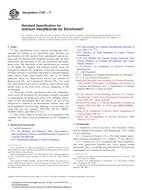 ASTM C787-11
ASTM C787-11 ASTM C788-03(2009)..
ASTM C788-03(2009)..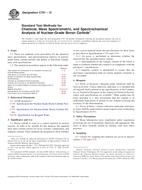 ASTM C791-12
ASTM C791-12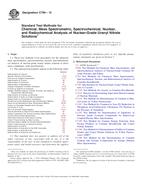 ASTM C799-12
ASTM C799-12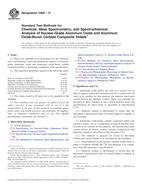 ASTM C809-13
ASTM C809-13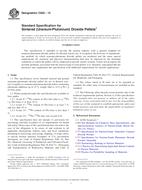 ASTM C833-13
ASTM C833-13
 Cookies
Cookies
